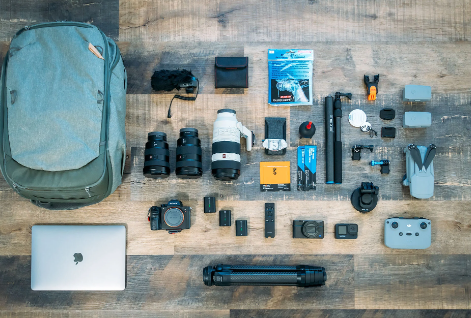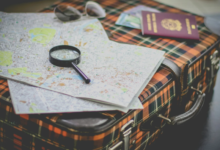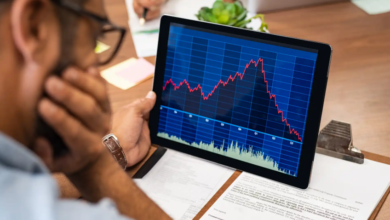Travel Photography Gear You Actually Need

There is an undeniable joy in capturing the moments that make travel unforgettable. A misty morning in the mountains, a vibrant city street, or the golden light that falls over a quiet harbor can all be preserved through photography. Yet as tempting as it may be to pack every camera accessory imaginable, the best travel photographers know that less is often more. The key lies in choosing versatile gear that enhances your creativity without weighing you down.
Whether you are wandering through historic cities, hiking to remote viewpoints, or taking in the sweeping vistas on a Panama Canal cruise, the right equipment can make all the difference. You do not need an overflowing backpack of lenses or high-end gadgets to take stunning travel photos. What you really need is a thoughtful selection of tools that fit your style, destination, and level of experience.
The Right Camera for the Journey
Choosing a travel camera can feel overwhelming. Options range from professional mirrorless systems to compact point-and-shoots that slip easily into your pocket. For most travelers, a mirrorless camera strikes the best balance between image quality and portability. These cameras offer the flexibility of interchangeable lenses while being lighter and smaller than traditional DSLRs.
If convenience matters most, a premium compact camera is a solid alternative. Many models now feature large sensors and advanced settings, giving you professional-level results without extra bulk. On the other hand, if your smartphone has a capable camera, it may be all you need. The latest devices offer impressive low-light performance and portrait capabilities, making them ideal for spontaneous moments when pulling out a full camera setup would take too long.
Lenses That Do It All
When space is limited, a single versatile lens can save you both weight and worry. A zoom lens that covers a wide to moderate telephoto range, such as an 18-105mm or 24-120mm, can handle everything from sweeping landscapes to intimate street portraits. This eliminates the need to constantly change lenses, which can be inconvenient in unpredictable weather or dusty environments.
If you prefer shooting scenery or architecture, a wide-angle lens captures expansive views beautifully. For travelers who enjoy photographing people or wildlife, a compact telephoto lens offers the reach needed to isolate your subject while keeping a natural look. A lightweight prime lens, such as a 35mm or 50mm, is also worth considering. These lenses are small, sharp, and excellent for capturing low-light scenes like evening markets or cozy cafés.
A Solid Yet Portable Tripod
A tripod may seem unnecessary until you need one. It is essential for long exposures, night photography, and time-lapse shots. However, traditional tripods can be bulky, making them impractical for travel. Look for a compact, carbon-fiber model that folds down small and fits easily into a carry-on.
If you are traveling light, consider a mini tripod or flexible tripod that wraps around railings or posts. These are particularly useful for self-portraits or steadying your camera in low light. Even smartphone photographers can benefit from a small tripod designed specifically for mobile devices, ensuring crisp shots no matter where you are.
Filters That Enhance Without Fuss
Filters can elevate your photography without the need for digital editing. A polarizing filter reduces glare from water and glass while deepening the colors of skies and foliage. This is especially useful when photographing tropical destinations or coastal areas, where light reflections can overpower the scene.
A neutral density (ND) filter helps create motion effects by allowing you to use slower shutter speeds in bright light. Think of silky waterfalls, smooth ocean waves, or clouds that streak softly across the sky. One or two high-quality filters can easily fit in your bag and dramatically expand your creative options.
Reliable Storage and Backup
Few things are more frustrating than running out of memory mid-adventure. Always carry extra memory cards, and choose ones with fast write speeds to handle large image files efficiently. For longer trips, a portable hard drive or cloud storage option can ensure that your photos are safely backed up.
Traveling photographers often underestimate the importance of organization. Keep your cards labeled and stored in a small protective case. Back up your files regularly, ideally in more than one place, to avoid losing irreplaceable images.
Lightweight Accessories That Matter
Sometimes it is the smallest tools that make the biggest impact. A lens cleaning kit, extra batteries, and a microfiber cloth are essentials for every photographer. Dust, fingerprints, and smudges are unavoidable when you are on the move, and these items ensure that your images stay sharp and clear.
A comfortable camera strap or harness can also make long shooting days more enjoyable. If you plan on doing a lot of walking or hiking, a crossbody strap that distributes weight evenly helps prevent fatigue. For smartphone shooters, a handheld gimbal can keep footage smooth while exploring on foot or from a moving vehicle.
Editing Tools for On-the-Go
Once the photos are taken, editing can turn a good shot into a great one. Lightweight laptops and tablets make it easier than ever to edit while traveling. Programs like Lightroom and Snapseed allow for quick color adjustments and cropping without needing a full studio setup.
If you prefer a simpler workflow, editing directly on your smartphone using apps designed for mobile photographers can be surprisingly effective. The goal is not to over-edit but to enhance what you saw and felt in the moment.
Traveling Smart with Your Gear
Packing efficiently is crucial when it comes to photography equipment. A weather-resistant backpack with adjustable dividers keeps your gear organized and protected. Choose one with discreet styling to avoid drawing attention in crowded areas.
When moving between destinations, be mindful of security and accessibility. Keep valuable items with you on planes, trains, and buses. If your travels involve water or outdoor adventures, waterproof pouches or dry bags can safeguard your camera from unexpected splashes.
Balancing Gear and Experience
Ultimately, great travel photography is not about having the most equipment—it is about observation and presence. The best images come from curiosity, patience, and the willingness to look beyond the obvious. A small but smart selection of gear frees you to focus on storytelling rather than technical limitations.
When you stand on a mountain trail waiting for sunrise, or lean over a ship’s railing as the sun sets during a Panama Canal cruise, what matters most is the moment itself. Your camera, no matter how advanced, is only a tool to preserve what you see and feel.
Choosing the right gear is about striking that balance between preparedness and freedom. With the essentials in your bag and an open mind, every journey becomes a chance to capture the world in a way that is uniquely your own. The memories will fade, but the photographs—carefully framed, thoughtfully composed, and honestly seen—will always bring you back to the places that changed how you see the world.






